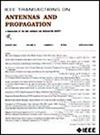An Effective Method for Attributed Scattering Center Extraction Based on an Improved ESPRIT Algorithm
IF 4.6
1区 计算机科学
Q1 ENGINEERING, ELECTRICAL & ELECTRONIC
引用次数: 0
Abstract
According to the theories of physical optics and geometrical diffraction, the backscattered field of a radar target in a high-frequency domain can be obtained by coherently summing the responses of a series of independent scattering centers. The attributed scattering center (ASC) model has seven parameters: scattering intensity, 2-D coordinates, frequency-dependent factor, length, orientation angle, and aspect-dependent factor. While these parameters describe the geometric structure and electromagnetic scattering characteristics of a target concisely and accurately, they can also serve as features in synthetic aperture radar (SAR) automatic target recognition (ATR) tasks. Therefore, the ASC model finds widespread use in ATR. The extraction of ASC model parameters represents a high-dimensional, nonlinear, and nonconvex optimization problem. In this study, an innovative method for the ASC model parameter extraction is proposed. Initially, the proposed method simplifies the ASC model by eliminating the nonlinear term sinc, resulting in the simplified ASC (SASC) model with four parameters: scattering intensity, 2-D coordinates, and frequency-dependent factor. Subsequently, an improved estimating signal parameter via the rotational invariance technique (ESPRIT) algorithm is proposed and used to estimate the SASC model’s parameters. A binary graph is then constructed using the 2-D coordinates of the SASC model. Furthermore, both localized ASC (L-ASC) and distributed ASC (D-ASC) are distinguished from the binary graph, and their parameters, including 2-D coordinates, length, and orientation angle, are calculated. Finally, the frequency-dependent factor and scattering intensity are determined by search and least-squares methods, respectively. The proposed method accurately estimates the ASC model parameters in the frequency domain without the need for image segmentation or an iteration procedure, thereby enhancing computational efficiency. Simulations and experiments validate the effectiveness of the proposed method.求助全文
约1分钟内获得全文
求助全文
来源期刊
CiteScore
10.40
自引率
28.10%
发文量
968
审稿时长
4.7 months
期刊介绍:
IEEE Transactions on Antennas and Propagation includes theoretical and experimental advances in antennas, including design and development, and in the propagation of electromagnetic waves, including scattering, diffraction, and interaction with continuous media; and applications pertaining to antennas and propagation, such as remote sensing, applied optics, and millimeter and submillimeter wave techniques

 求助内容:
求助内容: 应助结果提醒方式:
应助结果提醒方式:


